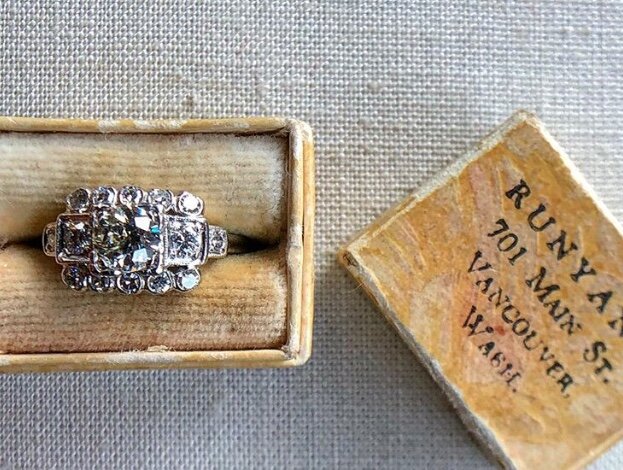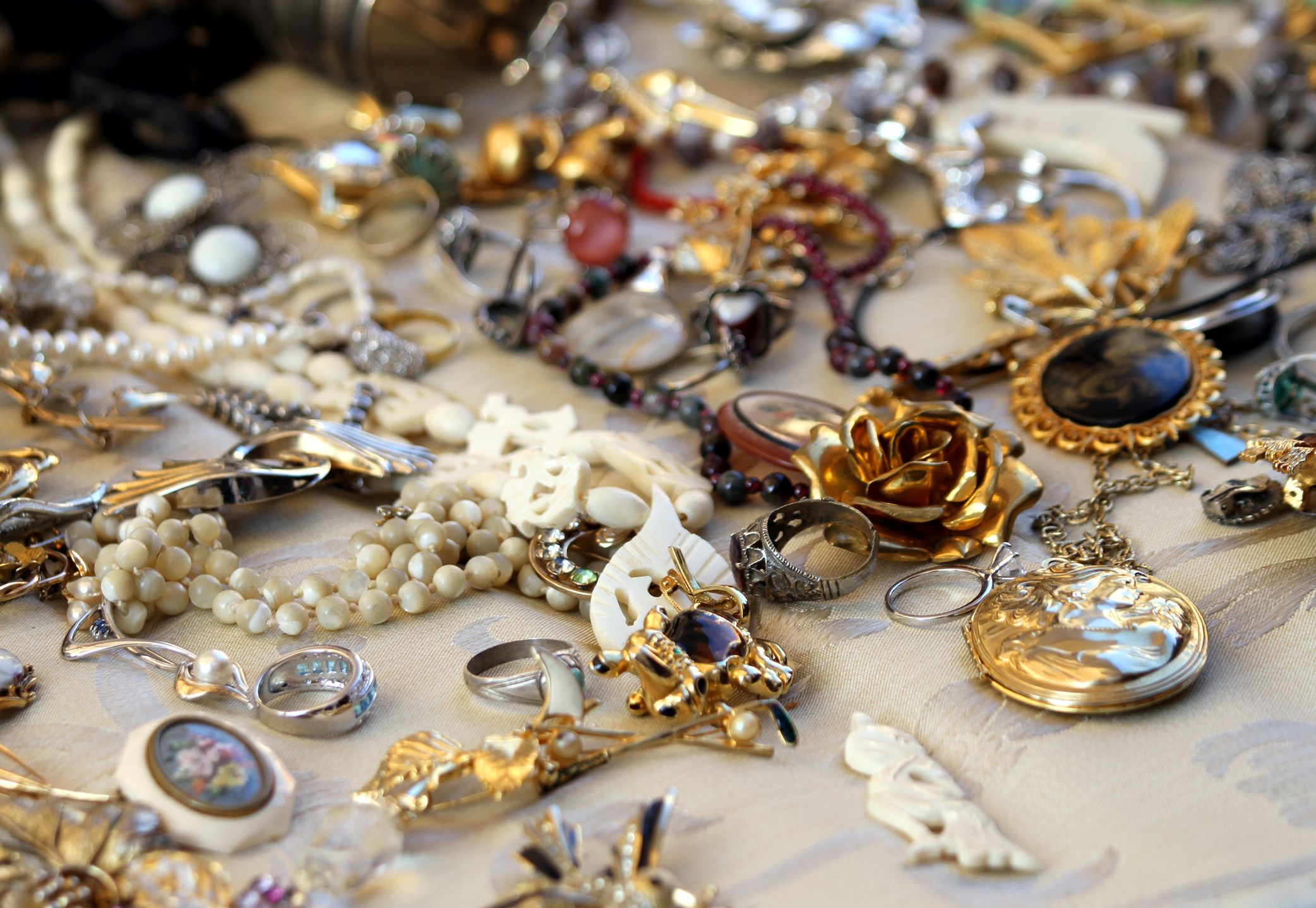Estate Jewelry Near Me: Where to Find Stunning Pieces Close to You
Estate Jewelry Near Me: Where to Find Stunning Pieces Close to You
Blog Article
Reveal the Rich Background Behind Stunning Estate Fashion Jewelry Collections
The expedition of estate fashion jewelry collections provides a distinct home window right into background, revealing the complex connection in between craftsmanship and social advancement. What tricks might these collections still hold?
The Beginnings of Estate Precious Jewelry
Just how did estate jewelry concerned personify the rich background and creativity of past eras? The origins of estate fashion jewelry can be traced back to different durations of workmanship, where fashion jewelry was not simply an accessory but a reflection of societal values, technological advancements, and artistic expressions. Each piece narrates, commonly connected with the lives of their previous owners, enveloping individual narratives alongside historical contexts.
The term "estate precious jewelry" commonly refers to pre-owned pieces, usually from considerable periods such as Victorian, Art Nouveau, or Art Deco. These items were created with careful focus to information, showcasing the skill of artisans that used products like gold, silver, and valuable gemstones. Unlike modern jewelry, estate items frequently include one-of-a-kind styles that highlight the aesthetic appeals of their time, hence functioning as concrete web links to the past.

Noteworthy Design Eras
Throughout background, numerous noteworthy layout ages have dramatically influenced the development of estate jewelry, each identified by distinctive designs, materials, and social contexts. The Georgian period (1714-1837) marked the beginning of elaborate designs, commonly including nature-inspired concepts and the usage of products like gold, silver, and gems established in sophisticated setups. Following this, the Victorian era (1837-1901) presented charming themes, with sentimental precious jewelry and innovative methods such as using enamel and cameos.
The Art Nouveau period (1890-1910) commemorated natural forms and the elegance of nature, utilizing materials like opals and pearls in moving styles. This was done well by the Art Deco period (1920-1939), which accepted geometric patterns, vibrant colors, and elegant products such as platinum and rubies, mirroring the modernist spirit of the moment.
The Mid-Century Modern era (1940-1960) showcased structured styles and the use of unique products, emphasizing minimalism and capability. Each of these periods not only reflects the artistic movements of their time but additionally encapsulates the social values and technological improvements that formed precious jewelry layout, making them a remarkable subject for collection agencies and chroniclers alike.

Famous Estate Fashion Jewelry Collections
The rich history of estate fashion jewelry is wonderfully exhibited by a number of prominent collections that display the virtuosity and workmanship from numerous layout eras. One of the most famous is the Cartier Collection, which mirrors the high-end and advancement of the legendary French jeweler. Pieces from this collection frequently feature intricate layouts and beautiful gemstones, highlighting the brand name's commitment to great craftsmanship.
An additional noteworthy collection is the Duchess of Windsor's fashion jewelry collection, which makes up numerous unique pieces, including the famous "Windsor" arm band. This collection not just exhibits the beauty of the Art Deco period yet also carries an abundant story of love and loss, as it came from Wallis Simpson, that famously wed Edward VIII.
The collection of the late actress Elizabeth Taylor this post likewise stands out in the realm of estate fashion jewelry. With countless items created by popular jewelry experts like Bulgari and Cartier, her collection personifies glamour and elegance, underscoring her individual style and fondness for unique gemstones.
These popular estate precious jewelry collections work as a testimony to the enduring attraction of fine fashion jewelry, supplying insight right into the artistic and cultural motions that shaped their production.
The Social Significance
Estate jewelry collections hold extensive cultural significance, reflecting not only the visual worths of their corresponding ages yet additionally the social and historic contexts in which they were created. Each item typically embodies the craftsmanship and creative fads of its time, showcasing the evolution of this design and technology in fashion jewelry production.
Additionally, these collections act as tangible web links to cultural customs and routines. As an example, wedding celebration bands and antique brooches might signify love and familial bonds, while pieces embellished with certain gems can represent social or regional identities. The materials utilized-- whether gold, silver, or valuable rocks-- commonly tell stories of trade, expedition, and the riches build-up of cultures.
Additionally, estate precious jewelry can work as historic artifacts, offering insights into the lives of individuals and the societal norms they browsed. The way fashion jewelry was put on and valued can reveal much about sex roles, standing, and individual expression within varying cultural landscapes. Thus, estate fashion jewelry transcends mere decoration, serving as an abundant narrative of human experience, creativity, and cultural heritage, inviting contemporary audiences to engage with the past in a purposeful means.
Caring for Your Estate Parts
Caring for estate fashion jewelry items needs a thoughtful method to you can find out more guarantee their longevity and preserve their unique features. To preserve the charm of these prizes, it is necessary to handle them with treatment. Always tidy estate jewelry using a soft, lint-free towel after each wear to remove oils and dirt. For deeper cleaning, utilize a moderate soap remedy and a soft brush, taking care to stay clear of harsh chemicals that may harm fragile materials.
Storage space is similarly important; store pieces independently in a fabric-lined box to stop entangling and scraping. Think about making use of anti-tarnish pouches or towels for silver items, as this assists to decrease the tarnishing procedure. Additionally, avoid subjecting jewelry to excessive wetness, extreme temperatures, or straight sunlight, which can detrimentally impact gemstones and steels.
Consulting a jeweler experienced in vintage or antique items can supply customized care options. By executing these techniques, enthusiasts can maintain their estate fashion jewelry's historical and visual value, guaranteeing these items proceed to be treasured for generations to come.
Final Thought
To conclude, the expedition of estate precious jewelry collections reveals a tapestry of artistic expression and social relevance, reflecting the values and appearances of numerous historic periods. Once possessed them, each piece serves as a testament to exceptional craftsmanship and the narratives of those who. Recognizing the origins, style periods, and notable collections boosts recognition for these artifacts, emphasizing their duty in preserving social heritage and motivating ongoing stewardship and look after these impressive treasures.
The exploration of estate jewelry collections provides an one-of-a-kind window into background, revealing the complex relationship between craftsmanship and social advancement. The beginnings of estate fashion jewelry can be mapped back to different periods of workmanship, where precious jewelry was not just an accessory yet a reflection of social values, technical improvements, and creative expressions.The term "estate jewelry" commonly refers to secondhand pieces, usually from significant ages such as Victorian, Art Nouveau, or Art Deco.The rich background of estate fashion jewelry is beautifully exemplified by several prominent collections that showcase the artistry and workmanship from different layout periods.In verdict, the expedition of estate precious jewelry collections reveals a tapestry of artistic expression and cultural importance, reflecting the values and visual appeals of various historical durations.
Report this page